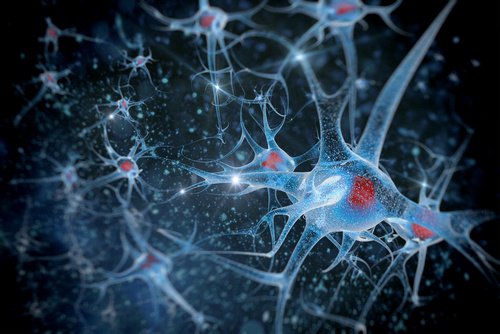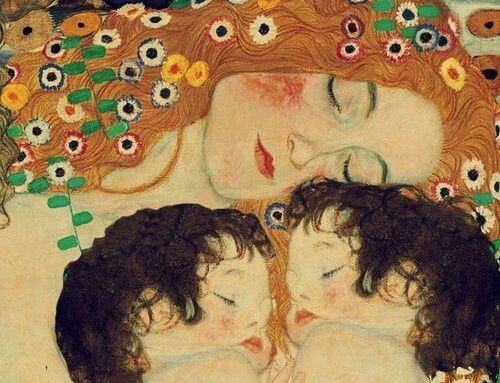The Intimate and Emotional Mother-Daughter Bond


Written and verified by psychologist Valeria Sabater
The mother-daughter bond goes far beyond the ties of education, affection, and the environment in which you grow and interact.
According to a study published by the journal ScienceDaily, the brain structure that governs your emotions can be transmitted from mother to daughter.
Because of this, neurologists, psychiatrists, and psychologists now have a basis from which to better understand the predisposition to develop a particular character trait. It may even explain the disposition to experience a greater or lesser risk of depression, for example.Acc
However, this doesn’t imply that if your mother was or is suffering from anxiety that you will, as well. It simply implies that there is a risk, a possibility linked to the mother-daughter bond.
Moreover, it’s interesting to learn that many women’s abilities to cope with adversity is also transmitted via this feminine link.
It’s something that’s both remarkable and exceptional.
We’ll give more details below.
The Invisible Mother-daughter Bond
Today, you probably know that certain diseases tend to have “a gender.” Migraines, fibromyalgia, and depression affect more women than men. It’s as if the brain structure of a woman, with its neural network, has feminine genetics embedded within it.
Science remains unable to find an explanation for why this is so.
See also:
The Symptoms of Fibromyalgia
However, when it comes to the world of emotions, it seems that there are some answers to the mystery of why certain mothers and daughters share an “emotional attachment” that can be positive and also very complex.
Let’s look at the mother-daughter bond in more detail.
 The Limbic System
The Limbic System
First, let’s talk about a structure within your brain that’s as important as it is powerful: the limbic system. You could describe it as the “artist of your emotions.”
Your limbic system is responsible for regulating and processing your emotional world. Furthermore, it’s also where your emotional memory is located, and where your personality patterns begin to develop.
The limbic system is, in turn, formed by other structures. These include the hippocampus and amygdala, which are also responsible for emotions like fear and your ability to integrate memories.
The director of this study was the psychiatrist Fumiko Hoeft, a specialist in childhood and adolescence. The purpose of the study was to find out whether there were similarities in the various regions of the brain between relatives.
What she found through various non-invasive MRI tests is that mothers and daughters shared the same shape and neuro-chemical activity in their limbic systems. This is an area which, as we mentioned above, is closely linked to the world of emotions.
Also discover:
8 Things You Never Knew about Menopause

There’s a “predisposition” to suffer from the same emotional problems.
First of all, it’s important to note that a predisposition is not a direct cause: it’s a risk, a possibility.
This information has proven to be so important to the field of medicine for the following reasons:
- Any emotional problems, such as stress and depression, are based on neuro-chemical activity. In this case, there are fluctuations between dopamine, norepinephrine, epinephrine, and other chemicals.
- If mothers and daughters share the same brain activity, that means that their reaction mechanisms may also be similar when faced with the same stimuli, situations, or problems.
These data could certainly help prevent certain types of psychological disease just on the basis of this genetic component.
Daughters are not copies of their mothers.
Thanks to this information, it’s possible that some people might somehow believe that daughters are copies of their mothers (at least emotionally).
However, this is not true.
To understand the mother-daughter bond and relationship, consider the following aspects for example: if your mother suffers from high blood pressure, diabetes, deep vein thrombosis, or is obese, it doesn’t mean that you have a 100% chance of developing the same problems.
See also:
7 Questions about Dreams
You need to see this information for what it truly is: a fact to keep in mind to prevent certain things.
A daughter will never be a copy of her mother. Her personal situation is different, and her education, personality, attitude, and values may also differ widely.
Often, when a child grows up observing certain issues in her mother, that’s the motivation she needs to stay healthy and prevent them in herself.
Everyone’s personal focus will be different. Although this predisposition may exist, your experiences growing up will provide you with appropriate strategies. These will help you to develop resilience, become stronger, and avoid the same disorders.
The study also found something related to the fathers. While maternal inheritance ties to emotions, the biological father may relate to a predisposition for dyslexia or autism.
Overall, they were very interesting findings.

All cited sources were thoroughly reviewed by our team to ensure their quality, reliability, currency, and validity. The bibliography of this article was considered reliable and of academic or scientific accuracy.
- University of California – San Francisco. (2016, January 26). Brain structure governing emotion is passed down from mother to daughter, says study: Research is first evidence that brain structure implicated in depression may be inherited. ScienceDaily. Retrieved December 19, 2018 from www.sciencedaily.com/releases/2016/01/160126175028.htm
This text is provided for informational purposes only and does not replace consultation with a professional. If in doubt, consult your specialist.








